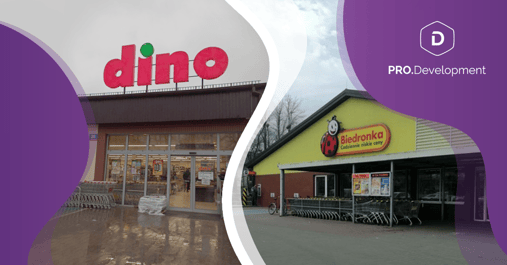Many people see discounters as the best dealers in the retail market in FMCG.
Meanwhile, the Polish Dino supermarket chain once again grew faster than its discount competitors. The most reliable results, ie the increase in sales of LfL (on the stores existing 12 months back) for the third quarter for Dino amounted to + 8.6% respectively, and for Biedronka "only" + 0.8%. We have a hypothesis that the current increase in LfL Dino may not result from better management of the store itself, but from 2 other things:
1. From the continuous, high rate of growth of stores - a new store needs between 10 to 18 months to achieve the target turnover. This translates into the effect of a low LfL base, because the 1-year-old store is constantly growing and hence such spectacular previous increases in Dino.
At the same time, this explains the rapid slowdown of this parameter vs. 20% in the first quarter, with the increasing number of older stores in the base.
2. Lack of cannibalism between Dino stores, with the amount of 895 vs. 2,700 Biedronka stores, where often a new shop hits existing ones.

The Dino stores themselves are very correct, but inside they are not spectacularly different than discount competition. The difference is the size format, which translates into the profitability of other locations and this should be appreciated.
